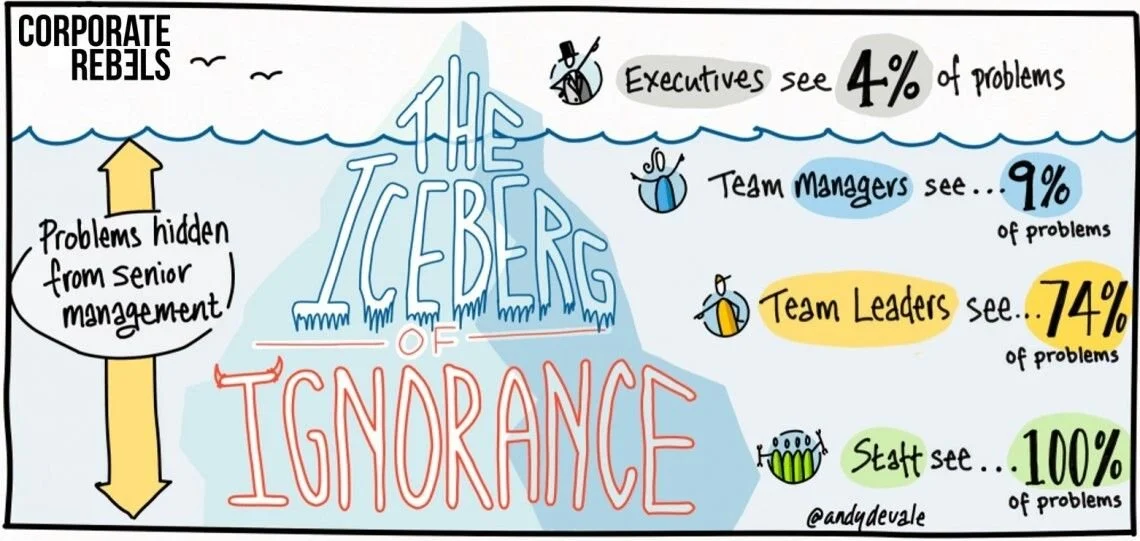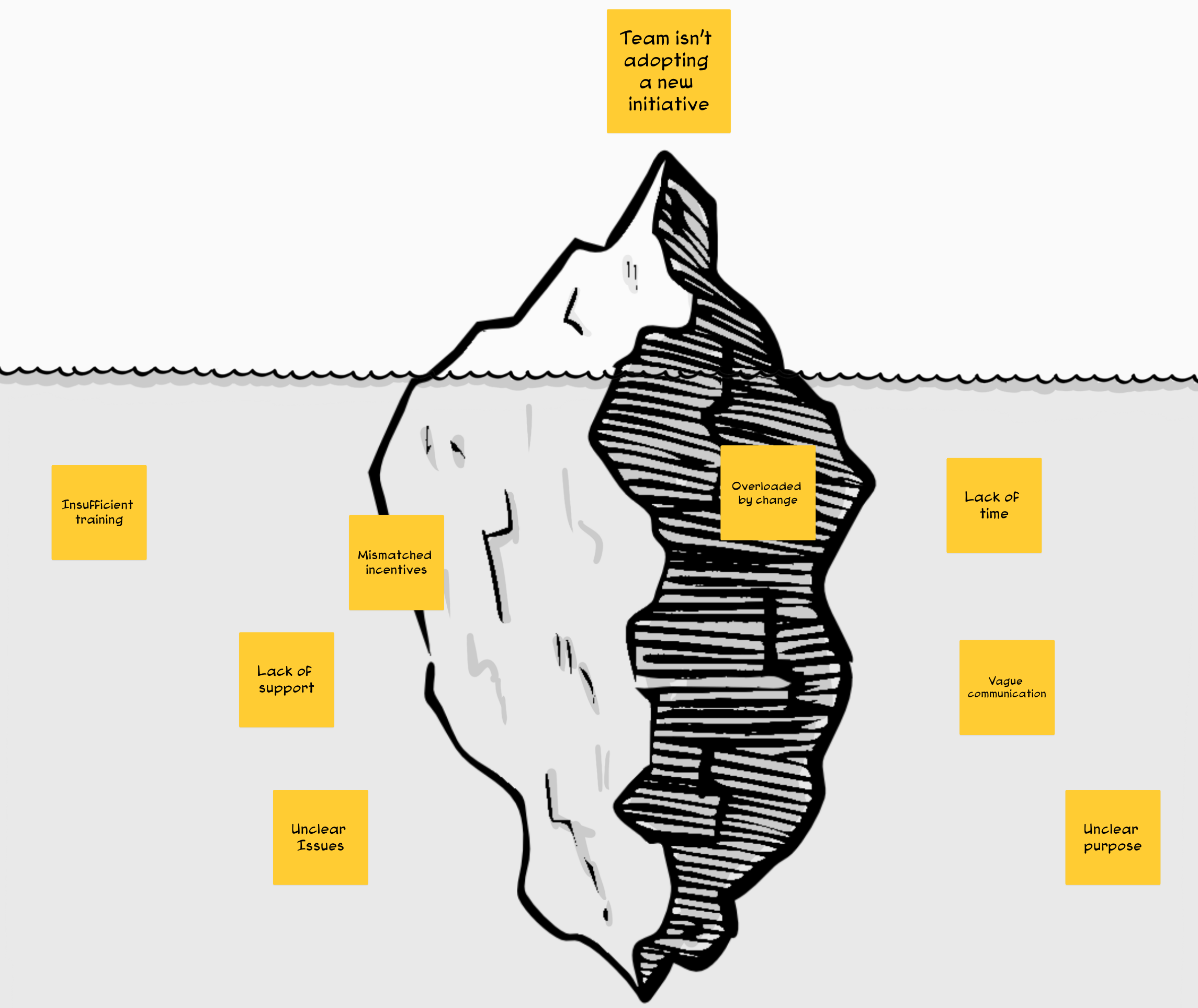The Iceberg Effect: What’s Happening Beneath the Surface?
Most Problems are Icebergs
Has problem solving ever felt a bit like Groundhog Day to you?
You fix an issue… and it comes back. Again. And again.
Projects stall. Teams get frustrated. Time and energy disappear into endless firefighting.
Why? Because the real problem isn’t what’s on the surface—it’s what’s lurking beneath.
One of the most powerful tools for making the invisible, visible is the Iceberg Template.
This simple yet effective framework allows you to:
✅Present complex ideas clearly by separating surface-level symptoms from deeper causes
✅Guide discussions to uncover root causes instead of reacting to visible issues
✅Clarify your own thinking when analyzing problems
Make it stand out
Looking to have a visual like this created for you? Check this out
We’ve seen this in action before. Our late father, Andy de Vale, created a version of this template for Corporate Rebels, visualizing how executives, managers, and staff experience different levels of organizational problems—showing how the real challenges often go unseen by leadership.
How to Use the Iceberg Template to Solve Problems
Let’ GO!
Step 1: Draw Your Iceberg
Start with a simple drawing - you can have something more complicated like the example on the left or something simpler like the right. Just think two big triangles
Step 2: Identify What’s Happening on the Surface
Ask: What’s the obvious problem?
📌Write down all the visible symptoms on sticky notes and place them at the top of the iceberg.
Step 3: Uncover the Hidden Causes
🧠Take 5-10 minutes to brainstorm possible deeper causes.
Ask yourself questions like:
💎What’s stopping this from happening?
💎What fears, habits, or processes might be in the way?
💎What assumptions are we making?
💎Why is this happening?
Step 4: Organize the Causes
Once all the sticky notes are up, look for patterns.
📍Group any duplicates or similar problems
📍Move deeper, more fundamental issues toward the bottom of the iceberg.
💡In our Example:
-“Vague communication” might be near the top.
- “Overloaded by change” might go deeper
Step 5: Find the Real Bottleneck & Solve It
Now that you see the full picture, ask:
💎Which of these deeper problems, if solved, would create the biggest impact?
💎What can we do right now to address this root cause?
Step 6: Use the Iceberg to Communicate Clearly
Now that you've uncovered the real problem, you have more than just insights—you have a visual anchor that makes it easy to explain what's really happening.
✅Instead of vague discussions, you can show the breakdown clearly.
✅It keeps everyone aligned, ensuring conversations stay focused.
✅It becomes a reference point for decision-making and tracking progress.
You haven’t just found the problem - you’ve created clarity that others can instantly grasp and act on!








